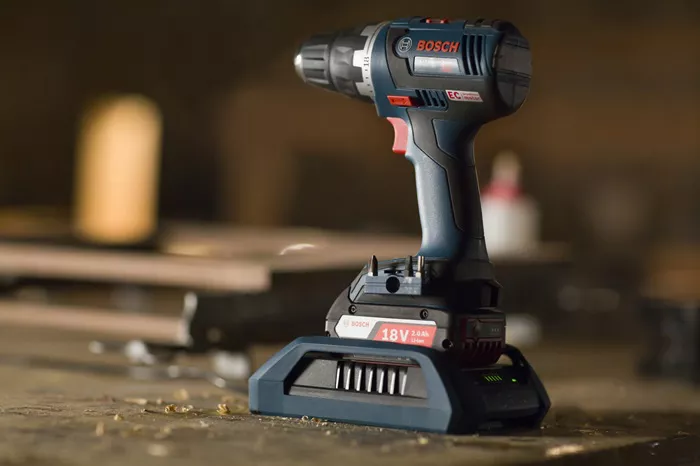When it comes to maintaining your plastic power tools, proper cleaning is essential to ensure longevity and optimal performance. Regular maintenance will not only improve the appearance of your tools but also ensure they work efficiently for years to come. This article provides a step-by-step guide on how to clean plastic power tools while maintaining safety, using the right supplies, and caring for your equipment.
Safety Precautions
Before you begin cleaning, safety should always be your top priority. Using power tools, especially when cleaning, presents potential hazards. Here’s how to stay safe during the cleaning process:
Disconnect the power source
Always ensure the tool is unplugged or the battery is removed. This reduces the risk of accidental activation and electrical shock.
Use protective gear
Depending on the cleaning method (especially when using cleaning products like isopropyl alcohol), consider wearing gloves and eye protection to avoid exposure to chemicals or debris.
Work in a well-ventilated area
This will help you avoid inhaling dust or fumes from cleaning solutions.
Cleaning Supplies and Products
To clean your plastic power tools effectively, using the correct products is crucial. Here’s a list of recommended cleaning supplies:
Mild soap and water
A gentle soap mixed with warm water is ideal for basic cleaning of plastic surfaces.
Soft cloths and microfiber towels
These are essential to avoid scratching the plastic. Soft cloths will allow for gentle wiping.
Brushes (soft bristle or toothbrush)
Brushes are necessary for cleaning out crevices and vents without damaging the plastic.
Compressed air
Perfect for blowing away dust and debris from hard-to-reach spots.
Plastic-safe cleaners
Some plastic cleaners are formulated to work specifically with synthetic surfaces without causing damage. Avoid harsh chemicals that may degrade plastic over time.
When selecting cleaning products, ensure that all products are safe for plastic surfaces and will not cause discoloration, cracking, or wear.
Step-by-Step Cleaning Instructions
Now that we have our supplies ready, it’s time to get to cleaning. Follow these clear and easy-to-follow steps:
Turn off and disconnect the tool
Always unplug the tool or remove its power source before cleaning.
Wipe the exterior
Use a damp cloth with mild soap to wipe down the surface. Avoid using excessive water to prevent moisture damage.
Clean vents and crevices
Use a soft brush (e.g., a toothbrush) to carefully clean around vents, grooves, and other difficult-to-reach areas. Be gentle to avoid scratching the plastic.
Blow away dust and debris
If necessary, use compressed air to blow out any remaining dust or debris from internal components. Hold the air can upright and use short bursts.
Clean the handles and grips
Wipe down the handles and grips, which tend to accumulate grime and oils. Use a slightly dampened cloth to remove residue.
Removing Stubborn Stains and Residue
Over time, some stains, grease, or residue may build up, requiring extra effort to clean. Here’s how to handle those tougher spots:
Isopropyl alcohol
This can be used to remove stubborn grease or sticky residue. Apply it to a cloth and gently rub the stain. Avoid using it on areas that are prone to damage, such as painted surfaces.
Plastic-specific cleaners
For more persistent stains, specialized plastic cleaners are available. These products are designed to lift oils and stains without causing damage to the material.
Drying and Reassembling
Once the cleaning is done, it’s crucial to properly dry the tool to avoid moisture damage.
Dry thoroughly
Use a clean, dry microfiber cloth to wipe down all surfaces, removing any leftover moisture.
Check for moisture inside vents
Use compressed air to ensure no water remains inside vents or internal compartments. Moisture trapped inside could lead to rust or electrical issues.
Reassemble the tool
If you removed any parts for cleaning, now is the time to reassemble them. Ensure all components are properly fitted and secure.
Maintenance Tips
Cleaning is just one part of maintaining your plastic power tools. Here are some additional tips to help keep your tools in excellent condition:
Regular cleaning
Clean your tools after every use, especially if they’ve been exposed to dirt, grease, or harsh conditions. This will help maintain their appearance and functionality.
Proper storage
Store your tools in a dry, cool environment, away from direct sunlight. This will help prevent plastic from warping, fading, or cracking.
Check for damage
Regularly inspect your tools for any signs of wear or damage, especially to the plastic housing. Any cracks or chips could compromise the safety and performance of the tool.
Lubricate moving parts
Some power tools require lubrication for moving parts. Check your tool’s manual for guidance on proper lubrication intervals.
Customer Reviews and Feedback
Many users have shared their success stories in cleaning and maintaining plastic power tools. Here are some of their tips:
Customer 1: “I always use a soft microfiber cloth and a mild soap solution to clean my drill. It works wonders and keeps it looking new!”
Customer 2: “I struggled with greasy residue on my saw, but after trying isopropyl alcohol, it came off without a trace. Now it’s spotless every time I clean it!”
Customer 3: “Compressed air has been a game-changer. It really gets into the crevices and blows out dust that I can’t reach with a cloth or brush.”
Conclusion
In conclusion, keeping your plastic power tools clean is essential for maintaining their performance and appearance. By following the safety precautions, using the correct cleaning supplies, and following step-by-step instructions, you can ensure your tools remain in great shape for years to come. Don’t forget to dry thoroughly and check for wear during regular maintenance. By doing so, you’ll ensure the longevity and effectiveness of your power tools.
Related topics:
- Are Power Tools AC or DC?
- Can You Run Power Tools Off a Car Battery?
- How Are Power Tools Classified?

